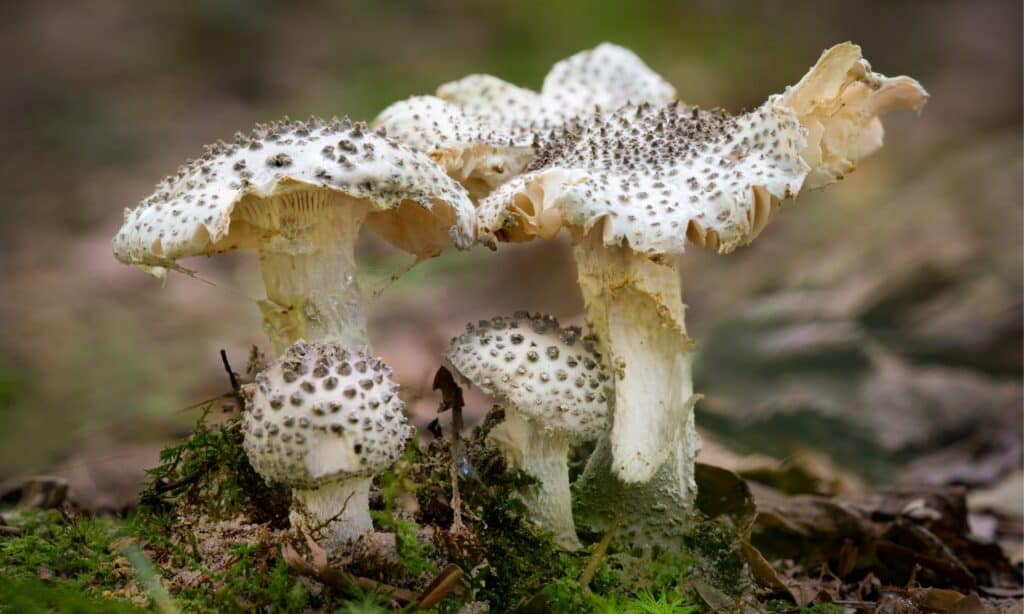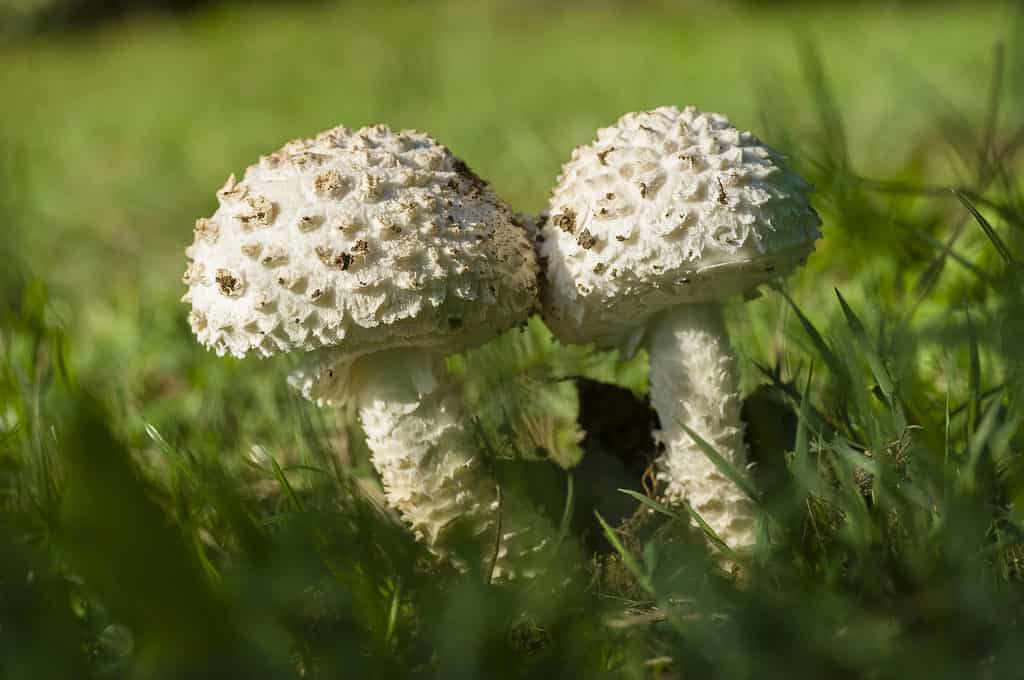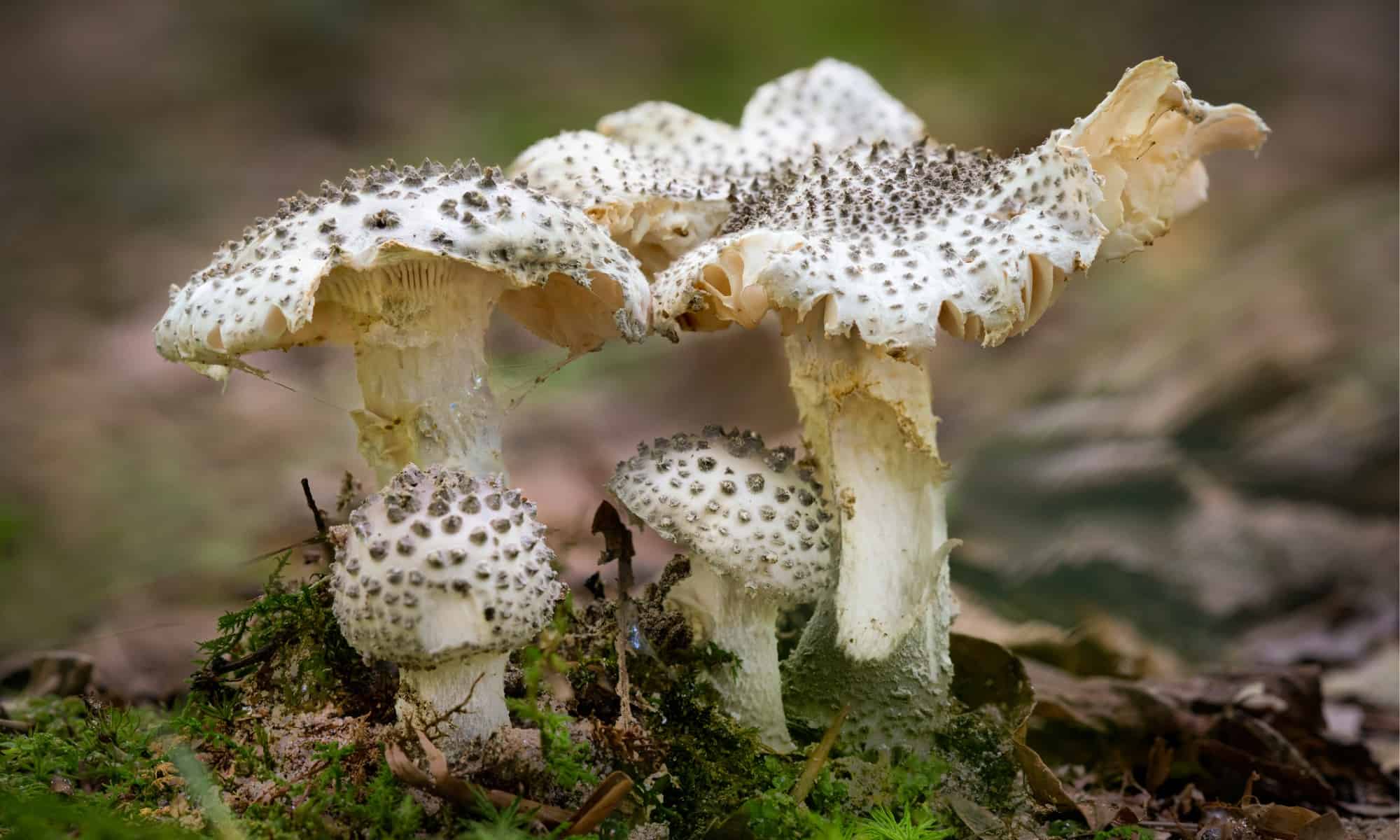If you’re interested in mycology, you may be familiar with the Amanita genus of mushrooms, which contains hundreds of gorgeous species, a handful of which are deadly poisonous (like the death cap and destroying angels). You may not know, however, that this genus is subdivided into two distinct subgenera.
In this guide, the subgenus of Amanita we’ll be focusing on is Amanita subgenus Lepidella. We’ll cover the classification of lepidella mushrooms, the shared characteristics of amanitas in this subgenus, and discuss the four sections of this subgenus.
So, without further ado, let’s dive in!
Lepidella Mushrooms: Fungal Classification

Some Lepidella mushrooms have swollen stems.
©iStock.com/MattCuda
As we mentioned above, lepidella mushrooms are a subgenus of amanitas. Amanitas contain about 1,000 species, nine of which are documented as producing poisonous amatoxins.
Currently, whether the Amanita genus should be divided into two distinct genera is under debate, so for now we’ll reference amanitas as one genus that contains two subgenera. These subgenera are Lepidella and Amanita (yes, that would be Amanita subg. Amanita or Amanita subg. Pers.).
Features of Lepidella Mushrooms
So, what differentiates these two subgenera of amanitas? Well, to be classified in the Lepidella subgenus, the spores of the amanita must react to an iodine solution (known as Melzer’s Reagen) by darkening their spore walls, known as amyloid spores.
Mycologists have further divided the Lepidella subgenus into four distinct sections: sect. Lepidella, sect. Amidella, sect. Phalloideae, and sect. Validae. Macroscopic features, as discussed below, define these sections.
We also list below the “type species” for each section. Type species are the particular species on which the official description of a genus, subgenus, or section is based.
Subgenus Lepidella Sect. Lepidella
For sect. Lepidella, the cap has an appendiculate but not striated margin. This means no fine grooves are running vertically from the margin of the cap, but there is the appearance of veil remnants that hang off the margin.
Additionally, these mushrooms have a friable (easily crumbled or broken) volva that doesn’t form an entire membranous sac around the base of the stipe.
This section contains the only known amanita species (about 40) confirmed to sometimes or always live without a mycorrhizal partner.
The type species for this section is Amanita vittadinii.
Subgenus Lepidella Sect. Amidella
With sect. Amidella, the cap margin is appendiculate but less distinctly so than sect. Lepidella, with the veil remnants, often disappears as the fruiting body matures.
The volva that encloses the entire stipe base of these specimens is particularly robust, multi-layered, and thick. Typically, the fruiting body stains pinkish when bruised.
All species of lepidella mushrooms in this section, except one, lack a partial veil ring. The exception is Amanita peckiana, and the partial veil ring disappears early on as the fruiting body matures.
Amanita volvata is the type species for this section.
Subgenus Ledpidella Sect. Phalloideae

Lepidella mushrooms have a friable (easily crumbled or broken) volva that doesn’t form an entire membranous sac around the base of the stipe.
©AlessandroZocc/Shutterstock.com
So, sect. Phalloideae contains the infamously deadly, amatoxin-producing mushrooms in the Amanita genus: the destroying angels and death caps. Death cap (Amanita phalloides) is the type species for this section of Lepidella.
This section is characterized by amanita species that are typically all-white, do not have an appendiculate cap margin, have a distinctly bulbous stipe base covered with a membranous universal veil, and a persistently present partial veil ring.
Subgenus Lapidella Sect. Validae
The final section of lepidella mushrooms is sect. Validae. This section is defined by specimens with a non-appendiculate cap, bulbous stipe base that tends to diminish with age, and a fragile, friable universal veil. This section of amanitas contains hemolytic toxins (blood poisoning).
However, these toxins are not heat-stable (unlike amatoxins) and are destroyed by thorough cooking. As such, some species in this section across Europe, Asia, and the Americas are regularly eaten by local people who understand the proper cooking procedures. The type species for this section is Amanita excelsa.
Ecology of Lepidella Mushrooms
Mushrooms of the genus Amanita are typically mycorrhizal, meaning they derive their nutrients from a symbiotic plant-fungi nutrient exchange. This is true of most species in the Lepidella subgenus. Amanitas, including mycorrhizal lepidella species, are mycorrhizal with various trees, including pine, oak, spruce, fir, cedar, and birch.
However, (as we mentioned above) the subgenus of Lepidella sect. Lepidella contains the only known species (of which there are about 40) of amanitas that either sometimes or always live their life cycles without forming a mycorrhizal relationship.
These lepidella mushrooms are, instead, saprobic, deriving their nutrients from dead organic matter.
Editor’s Note: While A-Z Animals does its best to ensure the accuracy of its content and photography, do not eat wild mushrooms without firsthand knowledge from a local mycologist or mushroom expert, as many types of mushrooms look similar.
Up Next:
- Angel Wing Mushrooms: A Complete Guide
- Chicken of the Woods Mushrooms: A Complete Guide
- Fool’s Mushrooms: A Complete Guide
The information presented on or through the Website is made available solely for general informational purposes. We do not warrant the accuracy, completeness, or usefulness of this information. Any reliance you place on such information is strictly at your own risk. We disclaim all liability and responsibility arising from any reliance placed on such materials by you or any other visitor to the Website, or by anyone who may be informed of any of its contents. None of the statements or claims on the Website should be taken as medical advice, health advice, or as confirmation that a plant, fungus, or other item is safe for consumption or will provide any health benefits. Anyone considering the health benefits of particular plant, fungus, or other item should first consult with a doctor or other medical professional. The statements made within this Website have not been evaluated by the Food and Drug Administration. These statements are not intended to diagnose, treat, cure or prevent any disease.
Thank you for reading! Have some feedback for us? Contact the AZ Animals editorial team.








